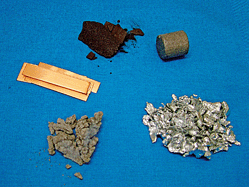Determination of toxic and essential elements in children’s blood with inductively coupled plasma-mass spectrometry
Abstract
Recent studies have suggested that low blood lead level, less than 50 µg L−1, can influence the neurobehavioral performance of children. In addition, nutritional deficiencies in some essential elements may increase the toxicity of lead, and some essential elements may influence the blood concentrations of lead and other toxic metals. These findings, coupled with the scarcity of available data on some elements in children's blood and the introduction of methylcyclopentadienyl manganese tricarbonyl (MMT) to gasoline, accentuate the need to monitor the concentrations of lead, manganese, and other heavy metals and essential elements in children's blood. This study reports on the multi-element analysis of blood of South African school children using inductively coupled plasma-


 Please wait while we load your content...
Please wait while we load your content...